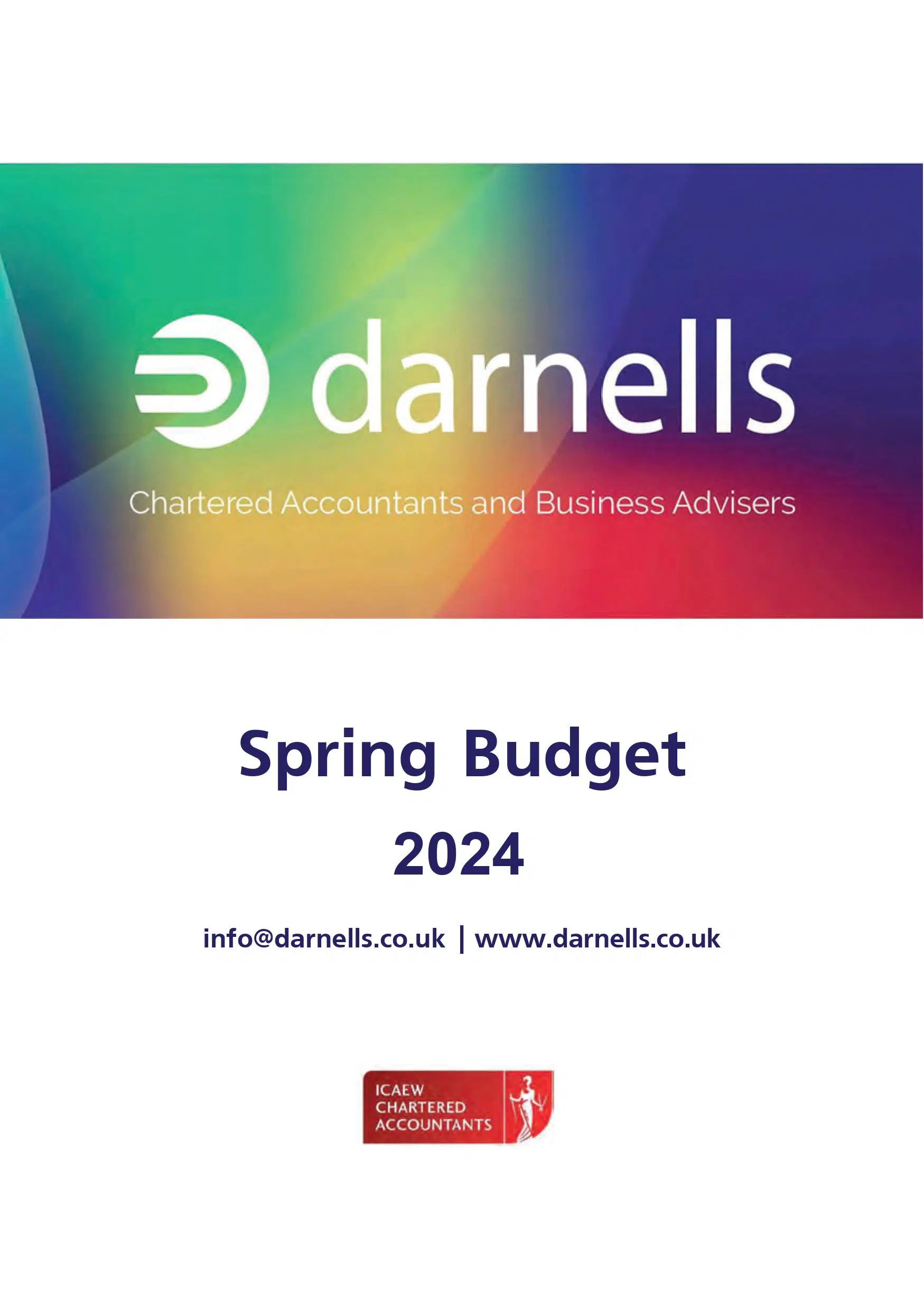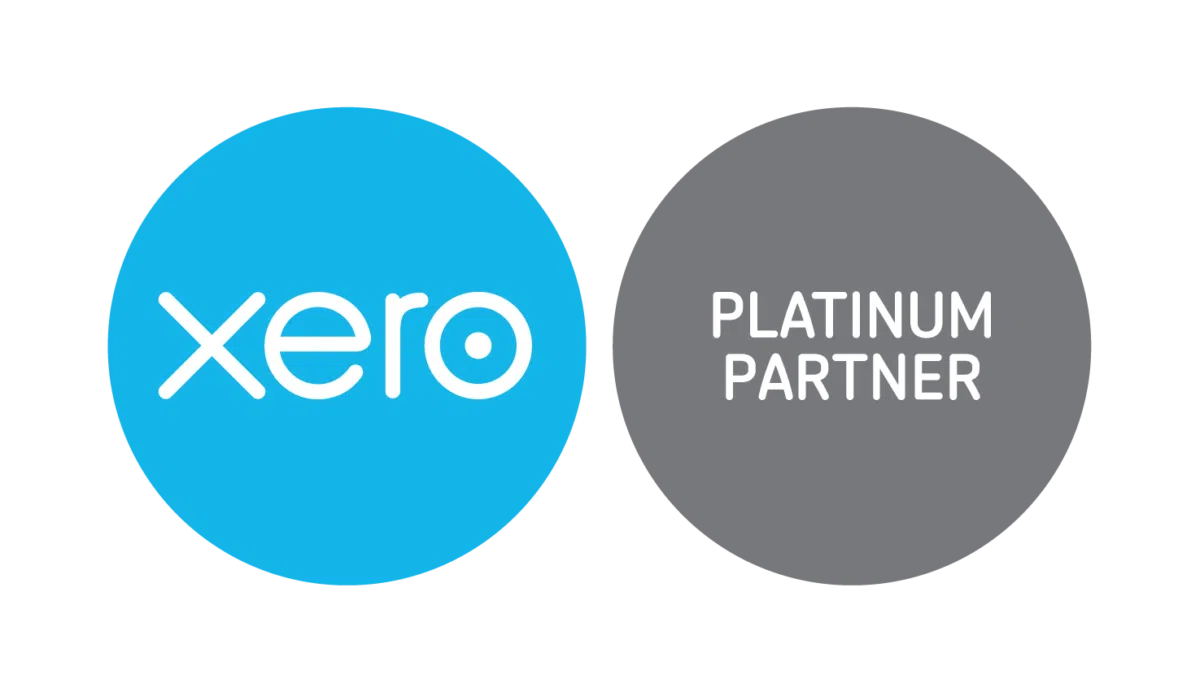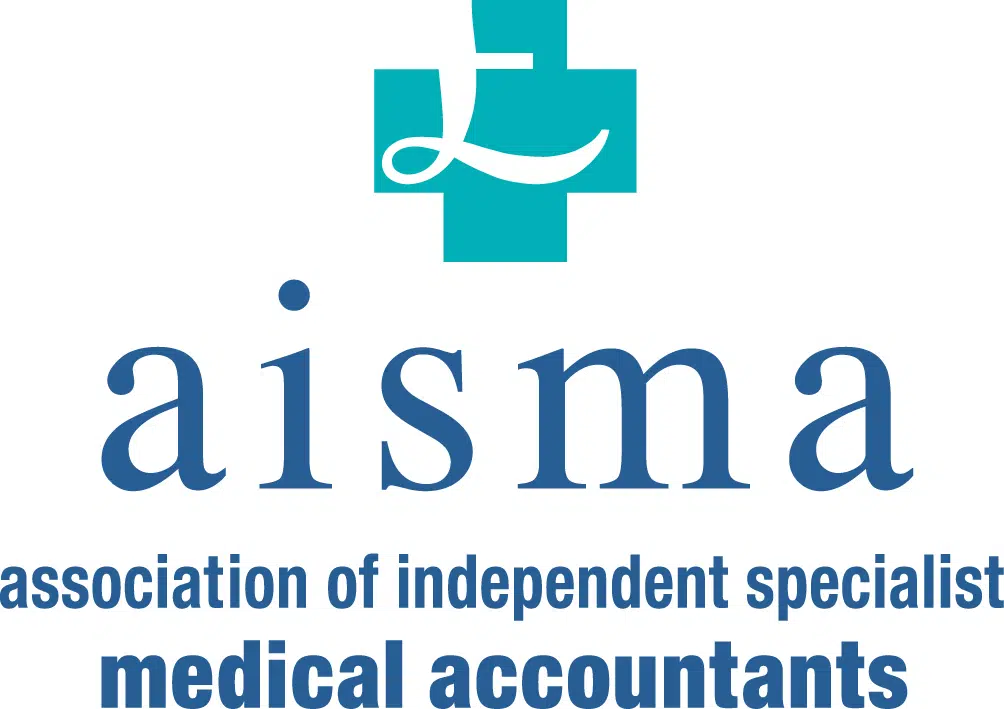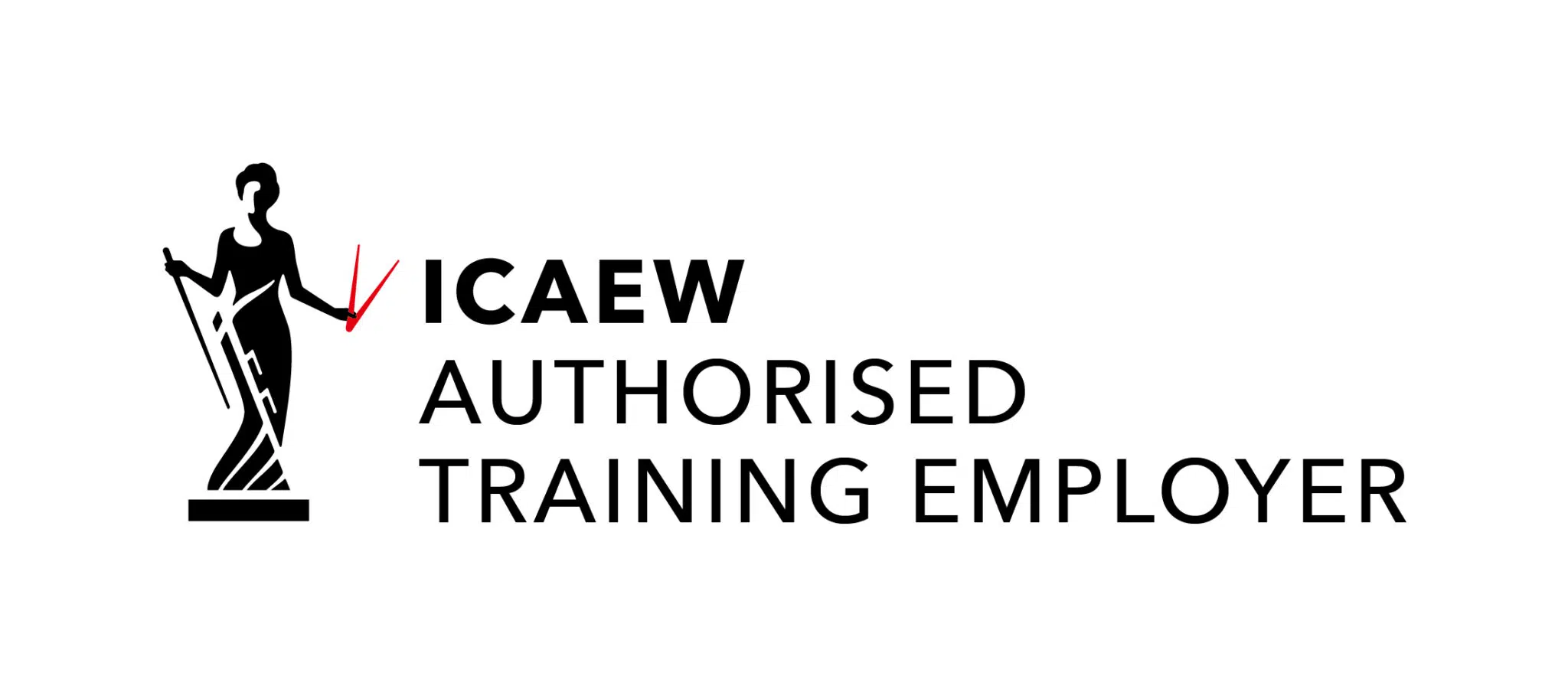Spring Budget 2024
Published: 12th March 2024

Spring Budget 6 March 2024
This Summary covers the key tax changes announced in the Chancellor’s speech and includes tables of the main rates and allowances.
At the back of the Summary you will find a calendar of the tax year with important deadline dates shown.
We recommend that you review your financial plans regularly as some aspects of the Budget will not be implemented until later dates.
We will, of course, be happy to discuss with you any of the points covered in this report and help you adapt and reassess your plans in the light of any legislative changes.
Surprise – no surprises!
In past years, the annual Budget was shrouded in secrecy. No one was supposed to know what was in the Red Box that the Chancellor held up outside 11 Downing Street on his way to Parliament.
There was an element of suspense. Now it seems that most of the proposals were predicted in the morning papers – the television pundits were reduced to speculating whether Jeremy Hunt would
produce ‘a rabbit from his hat’, but it turned out that the hat only contained what was expected.
The further reduction in National Insurance Contributions, over and above cuts already announced in the Autumn Statement, is certainly a significant measure, reducing the Government’s projected income by £10 billion a year. A reduction in the rate of income tax would be more expensive to achieve, because it would affect all taxpayers, not just those in work – but maybe that is a rabbit for another day, closer to the General Election that must happen within a year.
Raising the threshold for the High Income Child Benefit Charge is welcome – a tax relief worth over half a billion pounds a year. The changes to the tax regime for foreign domiciled people will, by contrast, raise a little less than £3 billion a year from 2026/27. The Labour Party has been arguing for such a change for some time, and may have mixed feelings over being denied the opportunity to introduce it themselves.
Even though the Chancellor failed to spring any major surprises, there is as always a great deal of information in the documents that are released on the internet the moment he sits down. It is also possible to miss the impact of changes that were announced in previous statements and which are only now coming into effect. In this document we have summarised the latest proposals and their impact, and also included reminders of some of those earlier announcements. If you would like to discuss what it all means for you, we will be happy to help.
Significant points
- Personal tax rates and allowances on income continue to be frozen at current levels
- Further cuts to National Insurance Contributions in addition to those announced in the Autumn Statement, to take effect in April 2024
- Increase in threshold for High Income Child Benefit Charge from £50,000 to £60,000 for 2024/25
- Maximum rate of CGT on residential property cut from 28% to 24% from 6 April 2024
- Advantageous tax treatment of furnished holiday lets abolished from 6 April 2025
- Advantageous tax treatment of ‘non-doms’ abolished from April 2025 and replaced with a ‘residence-based’ system
- Increase in turnover threshold for VAT registration to £90,000 from 1 April 2024
Personal Income Tax
Tax rates and allowances – 2024/25 (Table A)
The Autumn Statement included the announcement that the main personal allowance and the 40% threshold will remain at their 2022/23 levels until the end of 2027/28.
This represents a tax increase where income rises from year to year. For example, a person with a salary of £50,270 would pay £7,540 in income tax in 2023/24; if their income increases by 10% to £55,297 in any of the years to 2027/28, all of the increase will be taxed at 40%, and they will pay £9,551.
The income level above which the personal allowance is tapered away remains £100,000; it will be reduced to zero when income is £125,140, which is also the threshold for paying 45% tax. In the tapering band, the loss of tax-free allowance creates an effective marginal rate of 60%. Once again, annual increases in income will bring more people into these higher rates.
High Income Child Benefit Charge (HICBC)
The HICBC continues to apply to the higher earner of a couple where one receives Child Benefit and either of them has income of more than a set threshold. For 2024/25, for the first time since the charge was introduced in 2012/13, the threshold has been raised from £50,000 to £60,000; the band of income over which the clawback is calculated has also increased from £10,000 to £20,000 (1% of the total benefit for every £200 of income), so that the whole benefit is lost when income reaches £80,000 (£60,000 in 2023/24). The HICBC is one reason that an individual might have to register for self-assessment and file a tax return.
The Chancellor announced plans to reform the HICBC from April 2026 to take into account the combined income of the household, rather than just the higher earner. This will reduce the unfairness of clawing back nothing from a couple each earning £59,000 (in 2024/25), compared to full clawback where one of the couple earns £80,000. However, it is not a straightforward change because it will require HMRC to have the power to consider the income of the couple rather than as two individuals.
Scottish rates and allowances – 2024/25 (Table A)
The Scottish government has the power to set its own income tax rates for Scottish taxpayers for non-savings, non-dividend income. In its Budget in December 2023, the following were announced for 2024/25:
- A new ‘advanced’ tax rate of 45%, applying to income between £75,000 and £125,140.
- The top rate of tax, applying to income above £125,140, will be increased to 48% (from 47%).
- The 19% starter, 20% basic, 21% intermediate and 42% higher rates will be unchanged.
- The starter and basic rate thresholds will be increased by inflation to £14,876 and £26,561 respectively, with the higher rate threshold frozen at £43,662.
Many Scottish taxpayers will now pay a significantly higher amount of income tax than those elsewhere in the UK, although some low earners will pay less.
The Welsh Government has similar powers for Welsh taxpayers but has not varied the main UK rates.
Dividend income
The dividend allowance exempts some dividend income from tax, although that income still counts towards the higher rate thresholds. For 2024/25, the allowance is reduced from £1,000 to £500 (it was £2,000 up to 2022/23). This increases the tax liabilities of those with dividend income above the threshold, and will also require more people to file tax returns to declare tax liabilities which previously would have been covered by the allowance.
The tax rates on dividend income over £500 remain unchanged from the tax year 2022/23. The ordinary rate, paid by basic rate taxpayers, is 8.75%, the upper rate is 33.75%, and the additional rate is 39.35%. These rates apply across the UK.
The 33.75% rate also applies to tax payable by close companies (broadly, those under the control of five or fewer shareholders) on ‘loans to participators’ that are not repaid to the company within 9 months of the end of the accounting period.
The reduction in the dividend allowance and the increase in the tax rates increases the relative attractiveness of holding shares in a tax-free ISA or in a Venture Capital Trust. Dividends arising in an ISA or a qualifying VCT are not taxed and do not count towards the allowance.
Savings income
The savings allowance remains £1,000 for basic rate taxpayers, £500 for 40% taxpayers and nil for 45% taxpayers. Higher interest rates are likely to mean more people have savings income above these limits and will have to declare them in order to pay tax.
The savings rate band remains at £5,000. Non-savings income is treated as the ‘first slice’ of income, using the tax-free allowance and the savings rate band; if any of the £5,000 band is not used by non-savings income, any savings income falling within that band is taxed at 0%.
Foreign domiciled individuals
Individuals who are classed as ‘not UK domiciled’ (often referred to as ‘non-doms’) enjoy a number of tax advantages in relation to foreign income and gains, which will only be taxed if the money is brought to the UK (if the individual claims the ‘remittance basis of taxation’). Some of these advantages have been restricted in recent years, but the Chancellor has now announced that the system will be reformed and replaced with effect from 6 April 2025.
Individuals who have not been UK resident in the last 10 years, who become UK resident after that date and opt into the regime, will be exempt from income tax on their foreign income and gains for four years. After that, they will be taxable on the same basis as other UK residents.
There will be transitional rules for those non-doms who are already resident in the UK. They may be able to bring accrued income and gains to the UK at a reduced tax rate, and may rebase their foreign assets to their 2019 values in order to calculate taxable gains.
The government also intends to move to a residence-based regime for Inheritance Tax, and plans to publish policy and technical consultations on these changes later this year.
These are complicated rules, the details of which have not yet been published. Anyone affected by them should take advice and make sure they understand the opportunities and potential pitfalls.
Employees
Company cars and fuel (Table C)
The basis for taxing company cars and fuel provided for private use is set out in the Table. Annual increases in the rates for use of the car have been announced up to 2027/28, but the figure used to calculate the benefit of free use of business fuel for private journeys remains fixed for the moment at £27,800. The rates continue to incentivise the take-up of electric cars, even though they can no longer be provided completely tax-free.
The taxable amounts for the availability of a van for more than incidental private use, and for an employee’s private use of fuel in a company van, normally increase in line with inflation. However, the 2023/24 flat rate figures of £3,960 and £757 for these benefits remain the same for 2024/25. Electric vans remain a tax-free benefit.
National Insurance Contributions (NIC)
Thresholds and rates (Table D)
In his 2022 Autumn Statement, the Chancellor announced that the thresholds for NIC would remain fixed until 2027/28. In the 2023 Autumn Statement he announced a reduction in the main rate of Employees’ Class 1 NIC from 12% to 10% to take effect from 6 January 2024; in the Spring Budget he has cut the rate further to 8% with effect from 6 April 2024.
In the Autumn Statement the Chancellor announced an intention to cut Class 4 NIC for the self-employed from 9% to 8% from 6 April 2024, but he has now taken this further and reduced the main rate to 6%.
These changes constitute a significant tax reduction for people in work, amounting to a maximum £1,508 for an employee earning above the Upper Earnings Limit, and a maximum of £1,131 for a self-employed person. These cuts offset the effective income tax increases arising from the freezing of personal allowances, and are targeted at people in work – an income tax cut would also benefit those who do not pay NIC on their income, such as landlords and pensioners.
The upper limits for employee and self-employed contributions remain aligned with the point at which 40% income tax is payable (£50,270 per year, or £967 per week), and are frozen at that level until the end of 2027/28.
Because the Scottish higher rate of income tax applies at a lower level than in the rest of the UK (above £31,092 of taxable income in excess of personal allowance rather than above £37,700), Scottish taxpayers can be liable to higher rate income tax and full primary NIC on the same income (42% plus 8% in 2024/25).
Class 2 NIC
Self-employed people have for many years had to pay flat rate Class 2 NIC, which have conferred entitlement to State pension, as well as profit-related Class 4 NIC. As announced in the Autumn Statement, from 6 April 2024, Class 2 NIC will not be required to secure benefits for anyone earning above £6,725, saving £179.40 a year for those earning over £12,570. Anyone earning less than that can still pay Class 2 voluntarily in order to maintain a full contribution record; the Spring Budget included an announcement that the Government will consult later this year on how to achieve abolition of Class 2 for those people as well.
Savings and Pensions
Individual Savings Accounts (ISA)
The investment limits for 2024/25 remain £20,000 for a standard adult ISA (within which £4,000 may be in a Lifetime ISA – unchanged since 2017/18), and £9,000 for a Junior ISA or Child Trust Fund.
The Chancellor announced a consultation on a new ‘British ISA’, which would give an additional annual allowance of £5,000 to be invested in British companies. No date has been set for the introduction of this product.
Pension contributions (Table B)
In last year’s Budget, the limits on tax-advantaged pension savings were significantly raised: the Annual Allowance was increased to £60,000, and the Lifetime Allowance (LTA) Charge was abolished. No further changes were announced in the Spring Budget.
Although the LTA itself has now been formally abolished, the maximum amount that can be withdrawn as a tax-free lump sum remains 25% of the previous LTA (25% x £1,073,100 = £268,275) unless the person is entitled to ‘protection’ in relation to the original introduction of the LTA or any of the subsequent reductions of the limit.
The abolition of the LTA charge may encourage people who had stopped contributing to funds because they were over or near the LTA limit to consider further investments. The problem with pension schemes is that the rules change many times over the life of the scheme, and the most relevant ones are those in force when benefits are taken. A change of government could lead to a reintroduction of something similar to the LTA charge; that ought to be mitigated by transitional rules such as ‘fixed protection’, but it would be prudent to bear in mind that this very substantial tax cut for those with the largest pension pots might not be permanent.
Capital Gains Tax
Rates and annual exempt amount
As announced in the 2022 Autumn Statement, the CGT annual exempt amount will be cut from £6,000 in 2023/24 to £3,000 for 2024/25. The rates of CGT are unchanged at 10% for basic rate taxpayers and 20% for higher rate taxpayers on general assets.
The rate of CGT on disposals of chargeable residential property (such as second homes and rental properties) has been 18% for gains falling within a taxpayer’s basic rate band and 28% for higher rate taxpayers. The 28% rate is reduced to 24% for disposals on or after 6 April 2024. The Chancellor noted that the Budget forecasts suggest that this will result in more tax being collected, because it will encourage more people to realise capital gains.
The substantial reduction in the exempt amount (from £12,300 in 2022/23) will increase the tax payable, and it is also likely to require more people to complete self-assessment returns in order to report chargeable gains. This in turn means that more people will need records of the purchase cost of assets which they bought long ago; the cost history of small shareholdings can be very difficult to track down.
Anyone with gains of more than the exempt amount has to report them. If gains are lower than the exempt amount, full details only have to be given in the CGT pages of a tax return if the individual’s total proceeds in the year from chargeable disposals exceed £50,000.
Inheritance Tax
Rates
The IHT nil rate band remains fixed at £325,000 until the end of 2027/28. Holding the threshold at the same amount for 19 years (from 6 April 2009) will bring far more people into the scope of the tax. However, the £175,000 ‘residential nil rate band enhancement’ on death transfers can reduce the impact where it applies. A married couple may now be able to leave up to £1 million free of IHT to their direct descendants (£325,000 plus £175,000 from each parent), but the rules are complicated, and the prospect of the nil rate band being fixed for another 4 years increases the importance of proper IHT planning.
Simplification
Normally, personal representatives of estates have to pay Inheritance Tax before they can obtain a grant of probate, which means that they may have to borrow money to pay the tax as they cannot access the assets without the grant. From 1 April 2024, an administrative change will allow personal representatives to apply for a ‘grant on credit’ from HMRC, avoiding the need to take out a commercial loan.
Restrictions on reliefs
As announced in the 2023 Spring Budget, reliefs applicable to woodlands and agricultural property will be restricted to land in the UK with effect for transfers made on or after 6 April 2024.
Trusts and Estates
Simplification
The second Finance Act of 2023 provided that, for 2024/25, trusts and estates with income from all sources of up to £500 will not have to file a tax return, and the tax liability of the trustees or personal representatives will be deemed to be nil. This is a useful simplification for the trustees and executors, but the tax position of the beneficiaries will have to be considered carefully as it may differ from previous years.
Business Tax
Furnished holiday lettings (FHL)
For many years, income from FHL has been treated as a trade for income tax purposes, enjoying a number of advantages over general property rental. A FHL has to satisfy a number of conditions about availability for letting, actual periods let during the year and length of stays; if it qualifies, the advantages include unlimited relief for finance costs, capital allowances, and CGT business reliefs on disposals.
As widely predicted before the Budget, the Chancellor has decided to abolish the favoured treatment of FHL. He said this was to eliminate the advantage of short-term letting over longer-term letting to residential tenants, with the intention of making more property available for residents rather than visitors.
FHL treatment will be abolished from 6 April 2025. Details of the rules are not yet available, but it is likely that there will be tax charges arising on the transfer of properties from the FHL regime to the normal rental regime (such as balancing charges on assets on which capital allowances were claimed). Where money has been borrowed to finance the purchase of FHL property, the restrictions on interest relief for general residential rental income will apply in 2025/26.
Anti-forestalling rules will apply from 6 March 2024 to prevent taxpayers attempting to preserve the effect of the FHL rules on future capital gains by entering into unconditional sale contracts in advance.
Recovery Loan Scheme
The Recovery Loan Scheme has been renamed as the Growth Guarantee Scheme and extended until the end of March 2026. The scheme offers a 70% government guarantee on loans to SMEs of up to £2 million in Great Britain, and £1 million in Northern Ireland.
Business rates
On 1 April 2023, business rates in England were updated to reflect changes in property values since the last revaluation in 2017. A package of targeted support was announced a year ago to help businesses adapt to the new charges. Further measures were announced in the autumn to take effect for 2024/25.
The small business multiplier will be frozen for a fourth consecutive year at 49.9p, but the standard multiplier will be uprated by inflation to 54.6p. Eligible retail, hospitality, and leisure businesses will continue to qualify for 75% business rates relief, capped at £110,000 per business.
Construction Industry Scheme (CIS)
The CIS requires many businesses carrying out construction work to deduct tax (at either 20% or 30%) before paying subcontractors unless the supplier has gross payment status (GPS), which HMRC will grant to subcontractors who show a good record of tax compliance.
From 6 April 2024, VAT obligations are added to the statutory compliance test for being granted (and for keeping) GPS.
The measure also extends one of the grounds for immediate cancellation of GPS. HMRC is able to withdraw GPS if they have reasonable grounds to suspect that the GPS holder has fraudulently provided an incorrect return or incorrect information in relation to a list of taxes. This has been extended to include VAT, Corporation Tax Self- Assessment (CTSA), Income Tax Self-Assessment (ITSA) and PAYE.
Other reforms, also to come in from 6 April 2024, are:
- Digitalising applications for CIS registration.
- Bringing forward the first review of a GPS holder’s compliance history from 12 months after application to 6 months, reverting to 12 months thereafter.
- Removal of the majority of landlord to tenant payments from the scope of the CIS.
Changes of basis
Although there were no new announcements in this Budget, two important changes are coming in on 6 April 2024. After a transitional year in 2023/24, self-employed trading profits will be assessed on a fiscal year basis in 2024/25, regardless of the accounting date chosen by the business. Anyone who has an accounting date other than 31 March or 5 April should have been preparing for this change.
Secondly, the cash basis of accounting becomes the default for calculating trading profits for unincorporated businesses of any size for 2024/25. It will still be possible to choose to calculate profits using accruals accounting. All self-employed traders should consider the impact of the change and decide what is best for them.
Corporation Tax
Rate of tax
The Corporation Tax rate is unchanged at 25% for companies with profits over £250,000. The ‘small profits rate’ remains 19% for companies with profits of up to £50,000. Between £50,000 and £250,000 there is a tapering calculation that produces an effective marginal rate of 26.5% on profits between these limits, but an average rate on all profits of between 19% and 25%. The limits are divided between companies that have been under common control at any time in the previous 12 months, whether UK resident or not.
Capital allowances for plant and machinery
In 2023, ‘full expensing’ (100% relief for the cost in the year of purchase) was introduced for most plant and machinery. It is not currently available to companies that buy plant to lease out to other businesses. The Chancellor announced that ‘the Government will seek to extend full expensing to leased assets ‘when fiscal conditions allow’ and will publish draft legislation shortly.
Film tax reliefs
The government is ‘modernising and simplifying’ the audio-visual creative tax reliefs, namely: Film Tax Relief (FTR); High-End TV Tax Relief (HETV); Animation Tax Relief (ATR); Children’s TV Tax Relief (CTR) and Video Games Tax Relief (VGTR).
Under the current schemes, relief is given by way of an additional deduction from profits or surrendering a loss for a tax credit. The FTR, HETV, ATR and CTR are to be replaced by a new Audio-Visual Expenditure Credit (AVEC) regime. VGTR is being replaced by a new Video Games Expenditure Credit (VGEC). There are transitional rules to cover the timing of the change from one regime to the other.
It was previously announced that animation and children’s TV will qualify for an AVEC credit rate of 39%, rather than the 34% available for films, high-end television and under the VGEC. At the Budget, it was announced that films which meet the qualifying criteria for an ‘independent film’ will be eligible for an Independent Film Tax Credit (IFTC) of 53%.
The higher rate is available on expenditure incurred from 1 April 2024, for films which commence principal photography on or after 1 April 2024. Claims can be made from 1 April 2025.
To qualify for the IFTC, a film must pass a new test administered by the British Film Institute. It is expected this will require that either key talent on the film, such as the director and writer, must be from the UK, or the film must be an international co-production.
Cultural reliefs
Companies involved in certain cultural activities are eligible for tax relief, whereby their qualifying expenditure is enhanced for tax purposes by a specified percentage, thus reducing taxable profits. If they are loss-making, the loss may be surrendered to HMRC in exchange for a payable tax credit.
The percentage enhancements were increased during the pandemic to 45% (for non-touring productions) and 50% (for touring productions and all orchestra productions), but were due to begin to taper down to 30% and 35% in April 2025. Instead, from 1 April 2025, the rates of enhanced expenditure for Theatre Tax Relief, Orchestra Tax Relief and Museums & Galleries Exhibition Tax Relief will be permanently set at 40% and 45%, representing a five percentage point reduction on the current enhancements.
Value Added Tax
Registration threshold
The VAT registration and deregistration thresholds were previously intended to remain frozen at their present levels of £85,000 and £83,000 until 31 March 2026. In the first increase in the thresholds since April 2017, the thresholds have been increased to £90,000 and £88,000 with effect from 1 April 2024. The Budget announcement says that they will be again frozen at these new levels, but it does not say for how long.
Private hire vehicles
A High Court decision involving Uber and Sefton Metropolitan Borough Council has cast doubt on the VAT treatment of private hire vehicles. The Government will launch a consultation in April 2024 to understand the impact of the decision, and is committed to exploring a range of viable options to ensure that the court ruling does not have any undue adverse effects on the private hire vehicle sector and its passengers.
Property Taxation
Multiple Dwellings Relief (MDR)
MDR is a relief from Stamp Duty Land Tax (SDLT) that applies to bulk purchases of properties. The Government has concluded that it does not achieve its intended objective and is open to abuse, so it will be abolished for transactions with an effective date on or after 1 June 2024. Transitional rules mean that MDR can still be claimed for contracts exchanged on or before 6 March 2024, regardless of when completion takes place. This is subject to various exclusions, for example if there is a variation in the contract after that date.
First-time Buyers’ Relief
First-time buyers can claim relief from SDLT on certain property purchases. From 6 March 2024, someone buying a property using a nominee or bare trust arrangement will be able to claim the relief, and someone who has used such an arrangement in the past will not be treated as a first-time buyer, so they will not be able to claim the relief.
Annual Tax on Enveloped Dwellings (ATED)
ATED applies to residential property worth above £500,000 that is owned through companies and other corporate structures, unless the situation qualifies for a relief. The rates increase automatically each year with inflation and will rise by 6.7% from 1 April 2024, in line with the September 2023 Consumer Prices Index.
Other measures
Filing requirement
For 2023/24, taxpayers with incomes over £150,000 are automatically required to file a self-assessment tax return. The 2023 Autumn Statement included an announcement that those whose tax is all paid under PAYE will be removed from this requirement from 2024/25. However, as mentioned above, increases in interest rates on savings and reductions in the CGT annual exempt amount and the dividend allowance are likely to have the opposite effect – more people will have non-PAYE tax liabilities that have to be reported to HMRC.
Debt management
In the meantime, the Chancellor announced that HMRC will be given further resources to ‘improve the ability to manage tax debts’. The description – ‘to support both individual and business taxpayers out of debt faster and collect tax that is due’ – is phrased to sound positive, but the Budget documents suggest that this will raise £1 billion a year in extra tax revenue from 2025/26 to 2028/29.
Fuel duty
The Chancellor confirmed, as expected, that the 5p cut in fuel duty will be retained for the next year, and the rate will be frozen for the third year running.
National Living Wage (NLW)
From 1 April 2024, the NLW will apply to those aged 21 or over (currently 23), and will rise from £10.42 per hour to £11.44, with comparable increases to the other rates that apply to younger workers and apprentices.
Anti-avoidance rule
HMRC recently lost a case in the Supreme Court which indicated a flaw in the anti-avoidance rules known as ‘Transfer of Assets Abroad’. The Finance Bill will include provisions to prevent individuals using closely-controlled companies to bypass these rules and so avoid income tax charges in the UK. The new rules will apply to transfers abroad by closely-controlled companies from 6 April 2024.
Income Tax Rates and Allowances (Table A)
Main allowances 2024/25 2023/24
Personal Allowance (PA)*† £12,570 £12,570
Blind Person’s Allowance 3,070 2,870
Rent a room relief § 7,500 7,500
Trading income § 1,000 1,000
Property income § 1,000 1,000
* PA will be withdrawn at £1 for every £2 by which ‘adjusted income’ exceeds £100,000. There will therefore be no allowance given if adjusted income is £125,140 or more.
† £1,260 of the PA can be transferred to a spouse or civil partner who is no more than a basic rate taxpayer, where both spouses were born after 5 April 1935.
§ If gross income exceeds this, the limit may be deducted instead of actual expenses.
Rate Bands 2024/25 2023/24
Basic Rate Band (BRB) £37,700 £37,700
Higher Rate Band (HRB) 37,701-125,140 37,701-125,140
Additional Rate (AR) over 125,140 over 125,140
Personal Savings Allowance (PSA)
– Basic rate taxpayer 1,000 1,000
– Higher rate taxpayer 500 500
Dividend Allowance (DA) 500 1,000
BRB and AR threshold are increased by allowable personal pension contributions and Gift Aid donations.
Tax Rates 2024/25 2023/24
Rates differ for General, Savings and Dividend income within each band:
G S D G S D
% % % % % %
Basic 20 20 8.75 20 20 8.75
Higher 40 40 33.75 40 40 33.75
Additional 45 45 39.35 45 45 39.35
General income (salary, pensions, business profits, rent) usually uses personal allowance, basic rate and higher rate bands before savings income (mainly interest). To the extent that savings income falls in the first £5,000 of the basic rate band, it is taxed at nil rather than 20%.
The PSA taxes interest at nil, where it would otherwise be taxable at 20% or 40%.
Dividends are normally taxed as the ‘top slice’ of income. The DA taxes the first £500 (2023/24: £1,000) of dividend income at nil, rather than the rate that would otherwise apply.
High Income Child Benefit Charge (HICBC)
1% of child benefit for each £200 (2023/24: £100) of adjusted net income between £60,000 and
£80,000 (2023/24: £50,000 and £60,000).
Income Tax – Scotland 2024/25 2023/24
Rate Band Rate Band
Starter Rate 19% £2,306 19% £2,162
Basic Rate 20% 2,307 – 13,991 20% 2,163 – 13,118
Intermediate Rate 21% 13,992 – 31,092 21% 13,119 – 31,092
Higher Rate 42% 31,093 – 62,430 42% 31,093 – 125,140
Advanced Rate 45% 62,431 – 125,140 N/A N/A
Top Rate 48% over 125,140 47% over 125,140
Scottish rates and bands do not apply for savings and dividend income, which are taxed at normal UK rates.
Remittance basis charge 2024/25 2023/24
For non-UK domiciled individuals who have been UK resident in at least:
7 of the preceding 9 tax years £30,000 £30,000
12 of the preceding 14 tax years 60,000 60,000
15 of the preceding 20 tax years Deemed to be UK domiciled for tax purposes
Registered Pensions (Table B)
2024/25 2023/24
Annual Allowance (AA) £60,000 £60,000
Annual relievable pension inputs are the higher of earnings (capped at AA) or £3,600.
The AA is usually reduced by £1 for every £2 by which relevant income exceeds £260,000, down to a minimum AA of £10,000.
The AA can also be reduced to £10,000, where certain pension drawings have been made.
The maximum tax-free pension lump sum is £268,275 (25% of £1,073,100), unless a higher amount is “protected”.
Car and Fuel Benefits (Table C)
Cars
Taxable benefit: List price multiplied by chargeable percentage. 2024/25 and 2023/24
CO2 emissions Electric range All cars
g/km Miles %
0 N/A 2
1-50 >130 2
1-50 70 – 129 5
1-50 40 – 69 8
1-50 30 – 39 12
1-50 <30 14
51-54 N/A 15
Then a further 1% for each 5g/km CO2 emissions, up to a maximum of 37%.
Diesel cars that are not RDE2 standard suffer a 4% supplement on the above figures but are still capped at 37%.
Car Fuel
Where employer provides fuel for private motoring in an employer-owned car, CO2-based percentage from above table multiplied by £27,800.
National Insurance Contributions 2024/25 (Table D)
Class 1 (Employees) Employee Employer
Main NIC rate 8% 13.8%
No NIC on first £242pw £175pw
Main rate charged up to* £967pw no limit
2% rate on earnings above £967pw N/A
Employment allowance per qualifying business N/A £5,000
*Nil rate of employer NIC on earnings up to £967 per week for employees aged under 21, apprentices aged under 25 and ex-armed forces personnel in their first twelve months of civilian employment.
Employer contributions (at 13.8%) are also due on most taxable benefits (Class 1A) and on tax paid on an employee’s behalf under a PAYE settlement agreement (Class 1B).
Class 2 (Self-employed)
Flat rate per week if profits below £6,725 (voluntary) £3.45
Class 3 (Voluntary)
Flat rate per week £17.45
Class 4 (Self-employed)
On profits £12,570 – £50,270 6%
On profits over £50,270 2%
Employees with earnings above £123 per week and the self-employed with annual profits over £6,725 (or who pay voluntary Class 2 contributions) can access entitlement to contributory benefits.
M T W T F S S
1 2 3 4 5 6 7
8 9 10 11 12 13 14
15 16 17 18 19 20 21
22 23 24 25 26 27 28
29 30
April 2024
M T W T F S S
1 2 3 4 5
6 7 8 9 10 11 12
13 14 15 16 17 18 19
20 21 22 23 24 25 26
27 28 29 30 31
1 Commencement of £10 daily penalties for 2022/23 tax returns not filed.
3 Employers submit P46(car) printed form showing quarter’s changes to company cars.
†19 Employers pay PAYE for month April 2024.
*22 PAYE electronic payment deadline.
31 Employers deadline to send 2023/24 P60 to employees.
May 2024
M T W T F S S
1 2 3 4 5 6 7
8 9 10 11 12 13 14
15 16 17 18 19 20 21
22 23 24 25 26 27 28
29 30 31
5 Agree 2023/24 PAYE Settlement Agreement.
6 Employers send P11D and annual share scheme returns to HMRC and P11D to employees.
†19 Employers pay Class 1A NIC for 2023/24.
†19 Employers pay PAYE for quarter or month June 2024.
*22 PAYE and Class 1A NIC electronic payment deadline.
31 Deadline for payment of second instalment of
2023/24 self assessed tax on income.
June 2024
M T W T F S S
1
2 3 4 5 6 7 8
9 10 11 12 13 14 15
16 17 18 19 20 21 22
23 24 25 26 27 28 29
30
†19 Employers pay PAYE for month August 2024.
*22 PAYE electronic payment deadline.
September 2024
* Electronic payments due on a weekend must be made on the previous working day unless “Faster Payments” is used.
† Cheque payments due on a weekend must reach HMRC on the previous working day.
5 End of tax year. Cut-off for income and gains between
2023/24 and 2024/25.
5 Employers submit P46(car) electronic form showing
quarter’s changes to company cars.
†19 Employers pay PAYE for quarter or month March 2024.
19 Last day for final 2023/24 Employer Payment Summary
to reach HMRC.
*22 PAYE electronic payment deadline.
July 2024
M T W T F S S
1 2
3 4 5 6 7 8 9
10 11 12 13 14 15 16
17 18 19 20 21 22 23
24 25 26 27 28 29 30
†19 Employers pay PAYE for month May 2024.
*22 PAYE electronic payment deadline.
August 2024
M T W T F S S
1 2 3 4
5 6 7 8 9 10 11
12 13 14 15 16 17 18
19 20 21 22 23 24 25
26 27 28 29 30 31
1 If 2022/23 tax return not filed, further £300 penalty (or 5% of tax due, if higher) .
2 Employers submit P46(car) form showing quarter’s changes to company cars.
†19 Employers pay PAYE for month July 2024.
*22 PAYE electronic payment deadline.
October 2024
M T W T F S S
1 2 3 4 5 6
7 8 9 10 11 12 13
14 15 16 17 18 19 20
21 22 23 24 25 26 27
28 29 30 31
1 Corporation Tax payment deadline for companies with 31 December 2023 year-end.
5 Deadline for notifying HMRC if Income Tax or CGT
is due for 2023/24 and no tax return received.
†19 Employers pay PAYE Settlement Agreement liability for
2023/24.
†19 Employers pay PAYE for quarter or month September
2024.
*22 PAYE and PAYE Settlement Agreement electronic
payment deadline.
31 Last day to file 2023/24 SA return on paper
November 2024
M T W T F S S
1 2 3
4 5 6 7 8 9 10
11 12 13 14 15 16 17
18 19 20 21 22 23 24
25 26 27 28 29 30
2 Employers submit P46(car) form showing quarter’s changes to company cars.
†19 Employers pay PAYE for month October 2024.
*22 PAYE electronic payment deadline.
December 2024
M T W T F S S
1
2 3 4 5 6 7 8
9 10 11 12 13 14 15
16 17 18 19 20 21 22
23 24 25 26 27 28 29
30 31
†19 Employers pay PAYE for month November 2024.
*22 PAYE electronic payment deadline.
30 File 2023/24 SA return online to take advantage
of coding out of Income Tax underpayments.
31 Corporation Tax filing deadline for companies
with 31 December 2023 year-end.
January 2025
M T W T F S S
1 2 3 4 5
6 7 8 9 10 11 12
13 14 15 16 17 18 19
20 21 22 23 24 25 26
27 28 29 30 31
1 Corporation Tax payment deadline for companies with 31 March 2024 year-end.
†19 Employers pay PAYE for quarter or month Dec 2024.
*22 PAYE electronic payment deadline.
31 File 2023/24 Income Tax and CGT online return. Pay
2023/24 tax to avoid interest and first instalment of
2024/25 self assessment tax on income. Companies within IR35 to file Earlier Year Update for 2023/24.
February 2025
M T W T F S S
1 2
3 4 5 6 7 8 9
10 11 12 13 14 15 16
17 18 19 20 21 22 23
24 25 26 27 28
1 If 2022/23 tax return not filed, a further penalty of £300 (or 5% of tax due, if higher). If 2023/24 tax return not filed, a penalty of £100.
2 Employers submit P46(car) form showing quarter’s changes to company cars.
†19 Employers pay PAYE for month January 2025.
*22 PAYE electronic payment deadline.
March 2025
M T W T F S S
1 2
3 4 5 6 7 8 9
10 11 12 13 14 15 16
17 18 19 20 21 22 23
24 25 26 27 28 29 30
31
2 Deadline for payment of balance of 2023/24 tax to avoid a 5% late payment penalty.
†19 Employers pay PAYE for month February 2025.
*22 PAYE electronic payment deadline.
31 Corporation Tax filing deadline for companies with 31 March 2024 year-end.
* Electronic payments due on a weekend must be made on the previous working day unless “Faster Payments” is used.
† Cheque payments due on a weekend must reach HMRC on the previous working day.


















